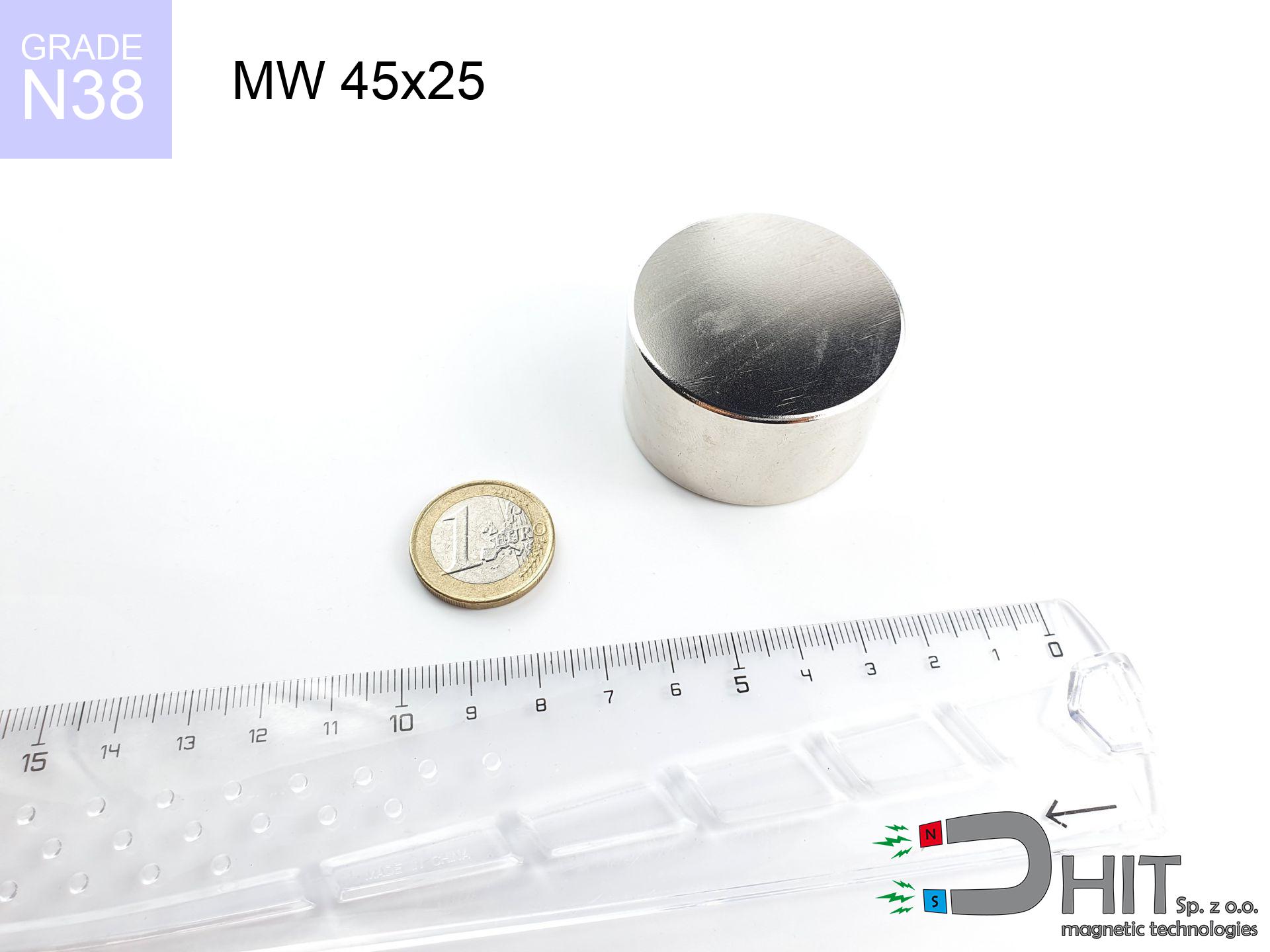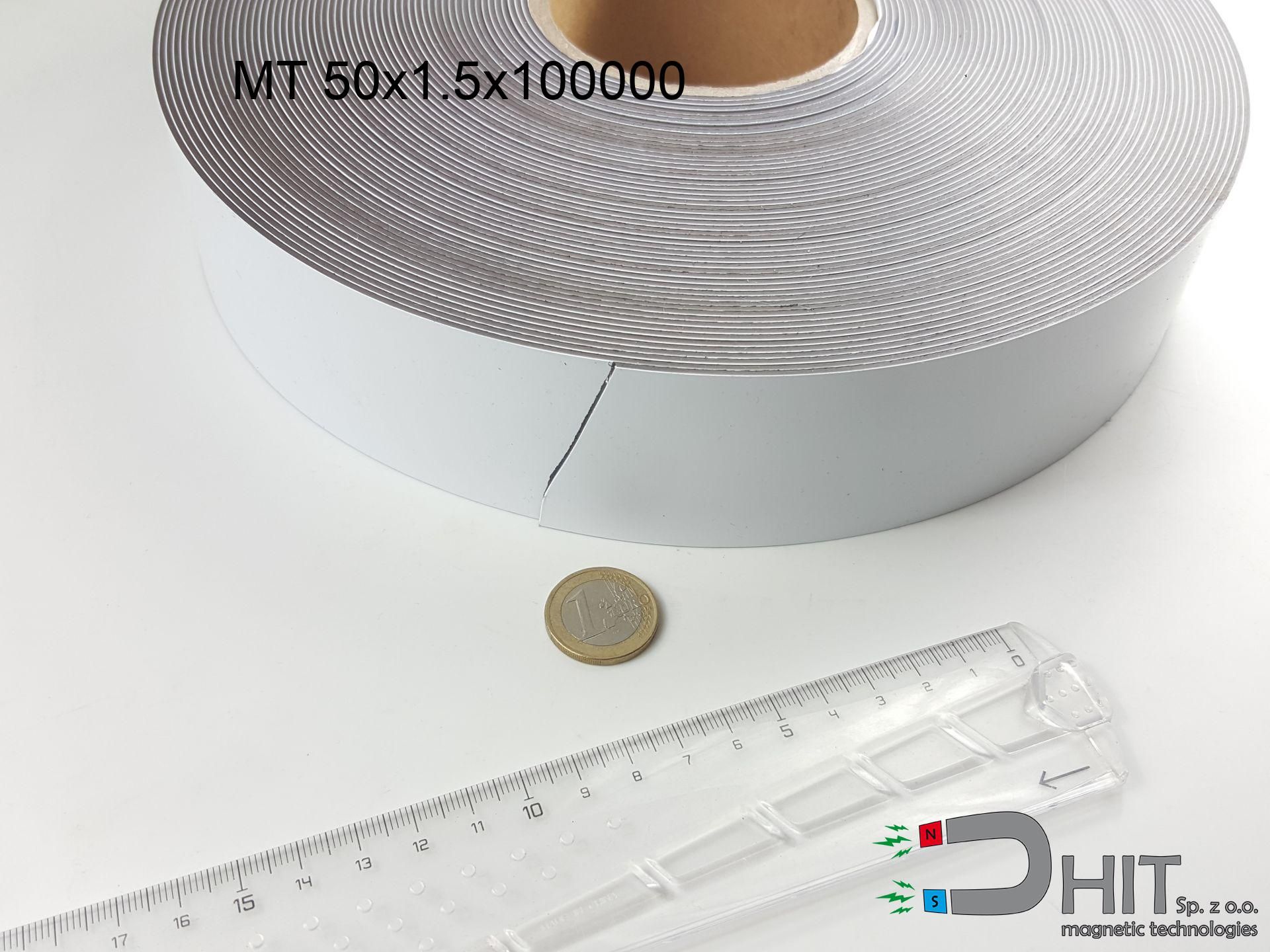SM 18x200 [2xM5] / N42 - magnetic separator
magnetic separator
Catalog no 130273
GTIN/EAN: 5906301812753
Diameter Ø
18 mm [±1 mm]
Height
200 mm [±1 mm]
Weight
0.01 g
Magnetic Flux
~ 5 400 Gauss [±5%]
442.80 ZŁ with VAT / pcs + price for transport
360.00 ZŁ net + 23% VAT / pcs
bulk discounts:
Need more?
Call us
+48 888 99 98 98
if you prefer drop us a message via
form
our website.
Strength along with form of neodymium magnets can be tested using our
magnetic mass calculator.
Order by 14:00 and we’ll ship today!
Technical specification - SM 18x200 [2xM5] / N42 - magnetic separator
Specification / characteristics - SM 18x200 [2xM5] / N42 - magnetic separator
| properties | values |
|---|---|
| Cat. no. | 130273 |
| GTIN/EAN | 5906301812753 |
| Production/Distribution | Dhit sp. z o.o. |
| Country of origin | Poland / China / Germany |
| Customs code | 85059029 |
| Diameter Ø | 18 mm [±1 mm] |
| Height | 200 mm [±1 mm] |
| Weight | 0.01 g |
| Material Type | Stainless steel AISI 304 / A2 |
| Magnetic Flux | ~ 5 400 Gauss [±5%] |
| Size/Mount Quantity | 2xM5 |
| Polarity | circumferential - 9 poles |
| Casing Tube Thickness | 1 mm |
| Manufacturing Tolerance | ±1 mm |
Magnetic properties of material N42
| properties | values | units |
|---|---|---|
| remenance Br [min. - max.] ? | 12.9-13.2 | kGs |
| remenance Br [min. - max.] ? | 1290-1320 | mT |
| coercivity bHc ? | 10.8-12.0 | kOe |
| coercivity bHc ? | 860-955 | kA/m |
| actual internal force iHc | ≥ 12 | kOe |
| actual internal force iHc | ≥ 955 | kA/m |
| energy density [min. - max.] ? | 40-42 | BH max MGOe |
| energy density [min. - max.] ? | 318-334 | BH max KJ/m |
| max. temperature ? | ≤ 80 | °C |
Physical properties of sintered neodymium magnets Nd2Fe14B at 20°C
| properties | values | units |
|---|---|---|
| Vickers hardness | ≥550 | Hv |
| Density | ≥7.4 | g/cm3 |
| Curie Temperature TC | 312 - 380 | °C |
| Curie Temperature TF | 593 - 716 | °F |
| Specific resistance | 150 | μΩ⋅cm |
| Bending strength | 250 | MPa |
| Compressive strength | 1000~1100 | MPa |
| Thermal expansion parallel (∥) to orientation (M) | (3-4) x 10-6 | °C-1 |
| Thermal expansion perpendicular (⊥) to orientation (M) | -(1-3) x 10-6 | °C-1 |
| Young's modulus | 1.7 x 104 | kg/mm² |
Table 1: Rod construction
SM 18x200 [2xM5] / N42
| Parameter | Value | Description / Unit |
|---|---|---|
| Diameter (Ø) | 18 | mm |
| Total length | 200 | mm (L) |
| Active length | 164 | mm |
| Section count | 7 | modules |
| Dead zone | 36 | mm (2x 18mm starter) |
| Weight (est.) | ~387 | g |
| Active area | 93 | cm² (Area) |
| Housing material | AISI 304 | 1.4301 (Inox) |
| Surface finish | Ra < 0.8 µm | Polished |
| Temp. class | 80°C | Standard (N) |
| Force loss (at max °C) | -12.8% | Reversible loss (physics) |
| Force (calculated) | 3.8 | kg (theor.) |
| Induction (surface) | ~5 400 | Gauss (Max) |
Chart 2: Field profile (7 sections)
Chart 3: Temperature performance
Chemical composition
| iron (Fe) | 64% – 68% |
| neodymium (Nd) | 29% – 32% |
| boron (B) | 1.1% – 1.2% |
| dysprosium (Dy) | 0.5% – 2.0% |
| coating (Ni-Cu-Ni) | < 0.05% |
Sustainability
| recyclability (EoL) | 100% |
| recycled raw materials | ~10% (pre-cons) |
| carbon footprint | low / zredukowany |
| waste code (EWC) | 16 02 16 |
Check out more proposals
Strengths as well as weaknesses of neodymium magnets.
Strengths
- They retain attractive force for nearly 10 years – the loss is just ~1% (according to analyses),
- They retain their magnetic properties even under strong external field,
- The use of an metallic finish of noble metals (nickel, gold, silver) causes the element to present itself better,
- Neodymium magnets generate maximum magnetic induction on a their surface, which allows for strong attraction,
- Neodymium magnets are characterized by extremely high magnetic induction on the magnet surface and can work (depending on the shape) even at a temperature of 230°C or more...
- Due to the potential of accurate molding and customization to unique requirements, neodymium magnets can be manufactured in a broad palette of geometric configurations, which increases their versatility,
- Huge importance in future technologies – they serve a role in HDD drives, electromotive mechanisms, precision medical tools, also complex engineering applications.
- Relatively small size with high pulling force – neodymium magnets offer impressive pulling force in tiny dimensions, which makes them useful in small systems
Limitations
- Brittleness is one of their disadvantages. Upon strong impact they can break. We advise keeping them in a strong case, which not only secures them against impacts but also raises their durability
- We warn that neodymium magnets can lose their strength at high temperatures. To prevent this, we advise our specialized [AH] magnets, which work effectively even at 230°C.
- They oxidize in a humid environment. For use outdoors we suggest using waterproof magnets e.g. in rubber, plastic
- Due to limitations in producing threads and complicated shapes in magnets, we propose using cover - magnetic holder.
- Potential hazard to health – tiny shards of magnets are risky, if swallowed, which is particularly important in the aspect of protecting the youngest. It is also worth noting that tiny parts of these products can complicate diagnosis medical when they are in the body.
- Due to expensive raw materials, their price exceeds standard values,
Lifting parameters
Magnetic strength at its maximum – what affects it?
- using a plate made of low-carbon steel, functioning as a ideal flux conductor
- whose transverse dimension is min. 10 mm
- with an ideally smooth contact surface
- with direct contact (without coatings)
- during detachment in a direction vertical to the mounting surface
- at standard ambient temperature
Determinants of practical lifting force of a magnet
- Air gap (between the magnet and the plate), because even a very small distance (e.g. 0.5 mm) results in a decrease in lifting capacity by up to 50% (this also applies to paint, corrosion or debris).
- Loading method – declared lifting capacity refers to detachment vertically. When attempting to slide, the magnet holds significantly lower power (typically approx. 20-30% of maximum force).
- Substrate thickness – to utilize 100% power, the steel must be sufficiently thick. Paper-thin metal restricts the lifting capacity (the magnet "punches through" it).
- Metal type – not every steel reacts the same. Alloy additives worsen the attraction effect.
- Surface condition – ground elements ensure maximum contact, which improves force. Rough surfaces reduce efficiency.
- Thermal conditions – NdFeB sinters have a negative temperature coefficient. At higher temperatures they are weaker, and in frost gain strength (up to a certain limit).
Lifting capacity testing was conducted on plates with a smooth surface of suitable thickness, under a perpendicular pulling force, however under parallel forces the holding force is lower. In addition, even a minimal clearance between the magnet’s surface and the plate reduces the load capacity.
Safe handling of neodymium magnets
Dust is flammable
Dust generated during machining of magnets is self-igniting. Avoid drilling into magnets unless you are an expert.
Protective goggles
Watch out for shards. Magnets can fracture upon violent connection, ejecting sharp fragments into the air. We recommend safety glasses.
Permanent damage
Watch the temperature. Exposing the magnet above 80 degrees Celsius will ruin its magnetic structure and strength.
Sensitization to coating
Studies show that the nickel plating (the usual finish) is a common allergen. If your skin reacts to metals, prevent direct skin contact and select coated magnets.
Pacemakers
Individuals with a heart stimulator must maintain an safe separation from magnets. The magnetism can disrupt the functioning of the life-saving device.
Hand protection
Mind your fingers. Two large magnets will join instantly with a force of massive weight, crushing anything in their path. Be careful!
Data carriers
Do not bring magnets close to a purse, laptop, or TV. The magnetism can destroy these devices and wipe information from cards.
Keep away from electronics
A strong magnetic field negatively affects the functioning of magnetometers in phones and GPS navigation. Maintain magnets near a device to avoid breaking the sensors.
No play value
Absolutely store magnets away from children. Ingestion danger is significant, and the effects of magnets clamping inside the body are fatal.
Safe operation
Before use, check safety instructions. Uncontrolled attraction can destroy the magnet or injure your hand. Be predictive.

![Separation magnetic rod SM 18x200 [2xM5] / N42 Separation magnetic rod SM 18x200 [2xM5] / N42](https://cdn3.dhit.pl/graphics/banners/magnet.webp)
![SM 18x200 [2xM5] / N42 - magnetic separator](https://cdn3.dhit.pl/graphics/products/sm-18x200-2xm5-gig.jpg)

![UI 45x13x6 [Z323] / N38 - badge holder UI 45x13x6 [Z323] / N38 - badge holder](https://cdn3.dhit.pl/graphics/products/ui45x13x6-z323-fap.jpg)
![UMP 75x25 [M10x3] GW F200 GOLD DUAL Lina / N42 - search holder UMP 75x25 [M10x3] GW F200 GOLD DUAL Lina / N42 - search holder](https://cdn3.dhit.pl/graphics/products/ump-75x25-m10x3-gw-f200-gold-x2-lina-car.jpg)


